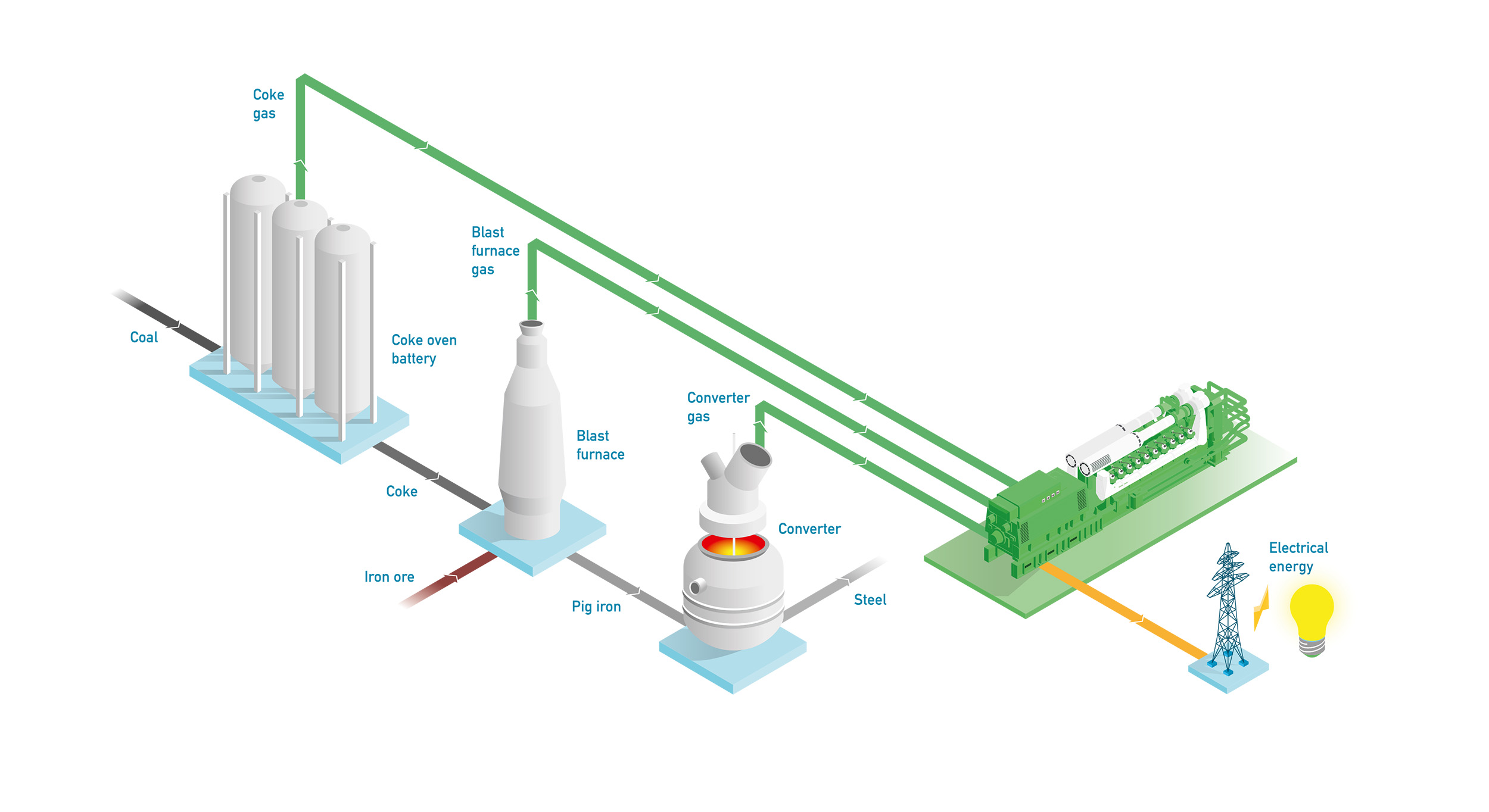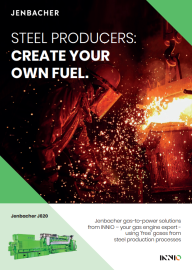Furnace Gas
Steel producers, create your own fuel— using furnace gas for power production
In the steel industry, you need a lot of power—and your energy costs continue to rise. Fortunately, there’s an energy source that is closer than you think: Gases created as a “free” by-product during your steel production processes can provide efficient power generation. In addition to the economic benefit, using these gases as engine fuel reduces industrial CO2 emissions and saves natural energy sources.
Gases from steel production processes
Steel production processes typically create large volumes of specialty gases such as coke gas, blast furnace gas, and converter gas. These gases have varying compositions and lower heating values (LHV), but all can be used in Jenbacher gas engines.
- Coke Gas
A by-product of industrial coke production from pit coal, coke gas is created by high-temperature dry distillation of coking coals in the absence of oxygen.
Composition: 50-60% H2, 15-30% CH4, 10-20% CO/CO2/N2
Calorific value (LHV): ~5 kWh/Nm3 - Blast Furnace Gas
Blast furnace gas (BFG) is a by-product of the iron ore melting process with an extremely low calorific value.
Composition: <5% H2, 20% CO
Calorific Value (LHV): ~0.7 kWh/Nm3 - Converted Gas (LD-Gas)
Converter gas is created from pig iron during the steel production process. Steel-making technology can be categorized into two different processes: blow molding or open hearth. Converter gas from both processes can be used in Jenbacher gas engines.
Composition: 65% CO, 15% CO2, 15% N2
Calorific Value (LHV): ~3 kWh/Nm3
Coke gas example
INNIO’s Jenbacher gas engines were specially modified to make efficient use of steel gases for combined heat and power (CHP) applications.
In general, the stable composition of coke gas makes it an attractive engine fuel. The high hydrogen content of coke gas, however, means the combustion process is very fast, which increases the danger of engine knocking or backfiring. To avoid this risk, INNIO has created an engine control system that is able to fuel the Jenbacher engine with a very lean mixture and, at the same time, react very quickly to variations in engine load.

Your benefits

- Mitigate greenhouse gases—through alternative disposal of a problem gas while simultaneously harnessing it as an energy source
- Reduce your energy costs while gaining greater predictability and stability with a combined heat and electricity supply
- Achieve high electrical efficiency compared to other power generation technology (e.g., steam or gas turbines)
- Get fast load capability—from zero to 100% load in 10 minutes
- Enjoy long intervals between overhauls, due to simple, high-quality construction
OUR EXPERTS ARE READY TO HELP YOU
Whether your business is looking for onsite power solutions, access to electricity, decreased energy costs, or even to sell electricity back to your local grid/consumers, Jenbacher´s regional experts can advise you on which solution makes the most sense for you.
Get in touch for free consultation on the following:
- The benefits of onsite power generation solutions for your company
- Potential financial benefits using economic modeling
- Consultation on the technical side of your project - fuel types, feasibility studies, equipment and balance of plant selection, and more
- Regional incentive programs relevant to your business
- Options to deliver your project: purchasing, financing and leasing, engaging a service provider (ESCO, BOO etc.)
- How to meet emissions targets
Fill-in contact form, or send us an email contact.en@innio.com.
Consult an expert
Send us a message and we’ll contact you to start the conversation.
Whether your business is looking for onsite power solutions, access to electricity, decreased energy costs, or even to sell electricity back to your local grid/consumers, Jenbacher regional experts can advise you on which solution makes the most sense for you.
Resources & Downloads

